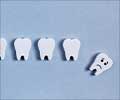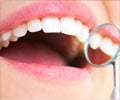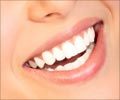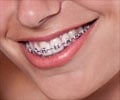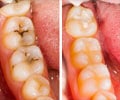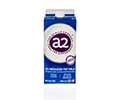- Orthodontic Treatment - (https://www.dentalhealth.org/orthodontic-treatment)
- Importance of Orthodontics - (https://www.aaoinfo.org/blog/parent-s-guide-post/importance-of-orthodontics/)
- Your Complete Guide to Adult Braces - (https://www.dentaly.org/us/adult-braces/)
- Root Resorption Associated with Orthodontic Tooth Movement: A Systematic Review - (https://www.ajodo.org/article/s0889-5406%2809%2901222-0/abstract)
- Dental Braces - (https://en.wikipedia.org/wiki/dental_braces)
About
Dental braces are dental devices used to align and straighten teeth. The third National Health and Nutrition Examination Survey states that 59% children in the United States suffer from some form of malocclusion.
Dental devices are placed by an orthodontist. Braces consist of brackets and wires which are attached to your teeth to align them. Most people undertake Orthodontic treatment to improve their appearance while others may undertake this treatment to improve the functional relation of their teeth.(1✔ ✔Trusted Source
Orthodontic Treatment
Go to source)
Why undertake Orthodontic Treatment?
You may decide to undertake orthodontic treatment due to a variety of reasons. Some of them are:
- To improve your appearance: a variety of dental malocclusions may compromise your appearance. This may include crowding of your teeth to proclined (forward projecting) upper front teeth.
- To improve the functional relation of your upper and lower teeth: your upper and lower back teeth come together while chewing and swallowing. The front teeth when too proclined lead to disorders like mouth breathing or acquired tongue thrusting. Getting malocclusions treated at the correct age will help improve various oral functions.

- To improve general dental heath: crowding or teeth that are not in proper alignment are difficult to keep clean resulting in caries and periodontal problems. Orthodontic treatment can get these teeth into proper alignment thereby improving the general dental health.
Who needs Braces?
Orthodontic treatment is generally performed in children and adolescents, that is, individuals in their growing age, as the results expected are better. However this treatment can also be undertaken by adults. With improvements in techniques, the results achieved are becoming more reliable.
Some pointers that indicate that your child might need orthodontic treatment are:
- Crowding: The teeth may overlap each other instead of being in proper alignment.
- Spacing: There may be large gaps between the teeth; this can compromise aesthetics as well as result in food impaction between the teeth.
- Open bite: The upper and lower front teeth may not be aligned properly resulting in a perceptible gap between them when the patient bites. This can compromise the function and aesthetics of the individual as well as result in oral habits such as tongue thrusting and mouth breathing.
- Poor alignment of your front teeth: The upper front teeth may show excessive proclination or may retroclined in relation to the lower front teeth. The reverse may also be true where your lower front teeth are outwardly inclined as compared to your upper front teeth. In both these cases, aesthetics and function are compromised.
- Traumatic bite: When the upper and lower front teeth show excessive overlap such that they rub against each other or the palate when the teeth are brought together, the condition is referred to as deep or traumatic bite. In such cases, it is important to get the condition treated as soon as it is detected to avoid trauma to the teeth or the soft tissue.
- Crossbite: Normally, the upper teeth are placed outwards while the lower teeth are placed inwards; when this relation is reversed, it is known as crossbite. The condition can result in poor function of teeth as well as trauma to the cheeks and gums.
- Treatment of impacted teeth: Impacted teeth are those teeth which do not erupt / appear in the oral cavity at the correct age and may stay buried in the jaw bone. These teeth can cause complications ranging from poor appearance to dental cysts. Braces may be used to assist in the eruption of such teeth.
What are Braces and how do they work?
Dental Braces are one of the names given to fixed orthodontic appliances. Orthodontics is the dental speciality that deals with the treatment of malocclusions, that is, deviation in the position of teeth or the upper and lower jaws. These malocclusions may be treated using fixed (dental braces) or removable appliances.
Braces consist of brackets (rectangular slots that are attached to your teeth) and wires. Braces work on the principal that when force is applied on bone it undergoes remodelling, that is, some areas will show bone formation and some areas will show bone resorption. They work by applying slow but sustained force on your teeth; this force in turn is transmitted to the bone. Areas where pressure is being applied will show resorption while areas where tension is created will show bone formation. This controlled force over time will cause the movement of your teeth in the bone allowing them to come into the proper alignment.(2✔ ✔Trusted Source
Your Complete Guide to Adult Braces
Go to source)
Best time to get orthodontic treatment:
Studies suggest that the best results can be achieved when the child is in his/her growing age. Parents should visit a dentist when the child is around 7 yrs old so as to get any interceptive orthodontic measures if possible. At this age, interception of a malocclusion can reduce the degree of subsequent treatment.(3✔ ✔Trusted Source
Importance of Orthodontics
Go to source)
Fixed orthodontics can be performed for all ages. However, the best time to go for this treatment is 10-18 yrs.
Treatment options:
Treatment options for braces are:
- Traditional metal wired braces are of stainless steel and are the most common type of braces. They consist of metal bracket and the metal wire secured either using elastics or they may be self ligating, where there is no need for the elastics. The main disadvantage of these braces is the poor aesthetics due to the obvious display of metal.
- Ceramic braces are a cosmetic alternative to metal braces. Their color matches that of the teeth, thereby blending in more with the dentition. However, the chief disadvantage of these braces is their tendency to break.
- Lingual braces: Traditional braces are fixed to the front or visible part of your teeth. Lingual braces are however attached to the lingual or inner surface of your teeth making them a more aesthetic treatment alternative. The disadvantage with this treatment option is that it cannot be used for all cases.
- Titanium braces are similar to stainless steel braces and are indicated in patients who are allergic to nickel. Their disadvantage is their greater cost and metallic appearance.
- Clear aligners: These are customized appliances made of plastic that offer the advantage of being more aesthetic. They can be removed by the patient while brushing and eating food. This system however has its disadvantage of being very expensive and as all types of tooth movements are not possible, the scope is also limited.
- Suresmile system: This is a computer-assisted system for diagnosis, treatment planning and fabrication of the brackets. The system consists of scanners that scan the teeth and formulate a treatment plan. The dentist can send the information to specialized labs that fabricate the brackets. The disadvantage of this system is its high cost and, being a relatively new system, it may not be available with all dentists.
Fitting procedure:
The initial procedure involves thorough diagnosis and treatment planning. This may involve making models of your teeth for which the dentist will take impressions of your teeth. Radiographic examinations may also be performed.
After the dentist has reached a conclusion as to the most appropriate treatment plan for you, he/she may start with the treatment. The dentist may decide to extract some of your teeth, most often premolars. This is generally done before the braces are fixed. The extractions are carried out in a phased manner, generally one tooth at a time.
After the extraction, on a subsequent appointment, the dentist will fix the braces to your teeth.
The brackets are attached to your teeth with special cements and then the wire is secured to your braces either with elastics or the braces may be self ligating. In subsequent appointments, the dentist will either re-examine your teeth for appropriate movement or may add a new wire to further move the teeth.
Orthodontic treatment may last from anywhere between 2-3 yrs.(4✔ ✔Trusted Source
Dental Braces
Go to source)
Post treatment:
After the dentist decides that the treatment is complete, he will remove the braces and prescribe a retainer. The function of the retainer is to ensure that the teeth do not move back into their original position as bone remodelling undergoes for 6 months to a year. In some cases the dentist may also give you a fixed retainer; these retainers are fixed to your teeth.
Home care instructions:
The orthodontist will give you certain instructions that must be followed to minimize the complications and ensure optimum results. These often include:
Brushing after each meal.- Fluoride mouth rises.
- Regular use of dental floss.
- In case the dentist has prescribed any removable appliance such as a retainer, it must be worn regularly. The device should be kept clean and immersed in water when outside the mouth.

Risks of orthodontic treatment:
As with any intervention, orthodontic procedures are associated with some risks. However, it must be pointed out that proper treatment planning, follow-up and religiously following your orthodontist home care instructions can considerably reduce these problems. Some of the problems associated with orthodontic treatments are:
- Tooth decay: An orthodontic patient is more prone to dental decay as braces make it difficult to keep your teeth clean. It is important that meticulous oral hygiene is maintained; along with this your dentist may also prescribe fluoride mouth rises to prevent caries.
- Root resorption: If excessive force is applied on teeth, it may result in root resorption and even loss of teeth. It is important that the dentist applies slow and sustained force on teeth.(5✔ ✔Trusted Source
Root Resorption Associated with Orthodontic Tooth Movement: A Systematic Review
Go to source) - Loss of periodontal support: The difficulty in maintaining oral hygiene also may cause break down of the periodontal ligament of your teeth. Again, it is important that proper oral hygiene be maintained.
Cost:
Braces may cost about $5000 or around 15000-50000 Indian rupees based on the duration and complexity of the treatment.
 MEDINDIA
MEDINDIA

 Email
Email

